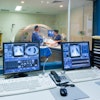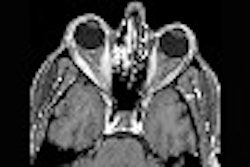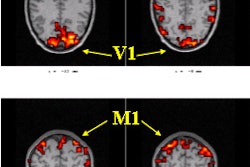(Ultrasound Review) Danish researchers at the Aarhus University Hospital compared the accuracy of MRI and transvaginal ultrasound in the evaluation of uterine myomas. Diagnostic accuracy is increasingly important as "the advent of new, minimally invasive modalities in myoma treatment makes the exact evaluation of the position, size, and number of myomas a pertinent issue," they reported.
Also, "the number of myomas and their localization and size determine the level of surgical complexity and affect failure rates." With this information better surgical treatment can be better planned. Surgical options include laparoscopic, hysteroscopic, or abdominal approach.
Published in the American Journal of Obstetrics and Gynecology, the results demonstrated that MRI correctly identified a higher number of myomas compared with ultrasound. All patients underwent MRI and ultrasound within two weeks of hysterectomy. The pathological specimen findings then were compared with MRI and ultrasound results. Each mode was independently evaluated without knowledge of any other results.
Initially, transvaginal ultrasound imaging was performed, and additional transabdominal imaging was used when a larger field of view was necessary. "Myomas were classified as subserous when they had subserous extensions and the epicenters of the myomas were closer to the serous surface than to the endometrium, and as submucous when they had extensions into the uterine cavity," they reported.
Both imaging modalities missed a large number of fibroids. MRI failed to demonstrate 0.59 fibroids per patient, and ultrasound failed to show 1.1 fibroids per patient. "False findings of myomas were slightly, but not significantly, more common by MRI than by ultrasound," they said.
Ultrasound is a less expensive imaging modality that is more readily available compared with MRI, and these researchers recommend that MRI only be used in cases where it definitely outperforms ultrasound.
According to the authors "transvaginal ultrasonography is as efficient as magnetic resonance imaging in detecting myoma presence, but its capacity for exact myoma mapping falls short of that of magnetic resonance imaging, especially in large (>375ml) multiple-myoma (>4) uteri." They concluded that charting the exact location of fibroids in a large uterus with gross involvement remains a difficult task, even when MRI is used.
"Accuracy of magnetic resonance imaging and transvaginal ultrasonography in the diagnosis, mapping, and measurement of uterine myomas"M Dueholm et al
Department of gynecology and obstetrics, Aarhus University Hospital, Aarhus, Denmark
Am J Obstet Gynecol 2002 April; 186: 409-415
By Ultrasound Review
June 26, 2002
Copyright © 2002 AuntMinnie.com


.fFmgij6Hin.png?auto=compress%2Cformat&fit=crop&h=100&q=70&w=100)





.fFmgij6Hin.png?auto=compress%2Cformat&fit=crop&h=167&q=70&w=250)











